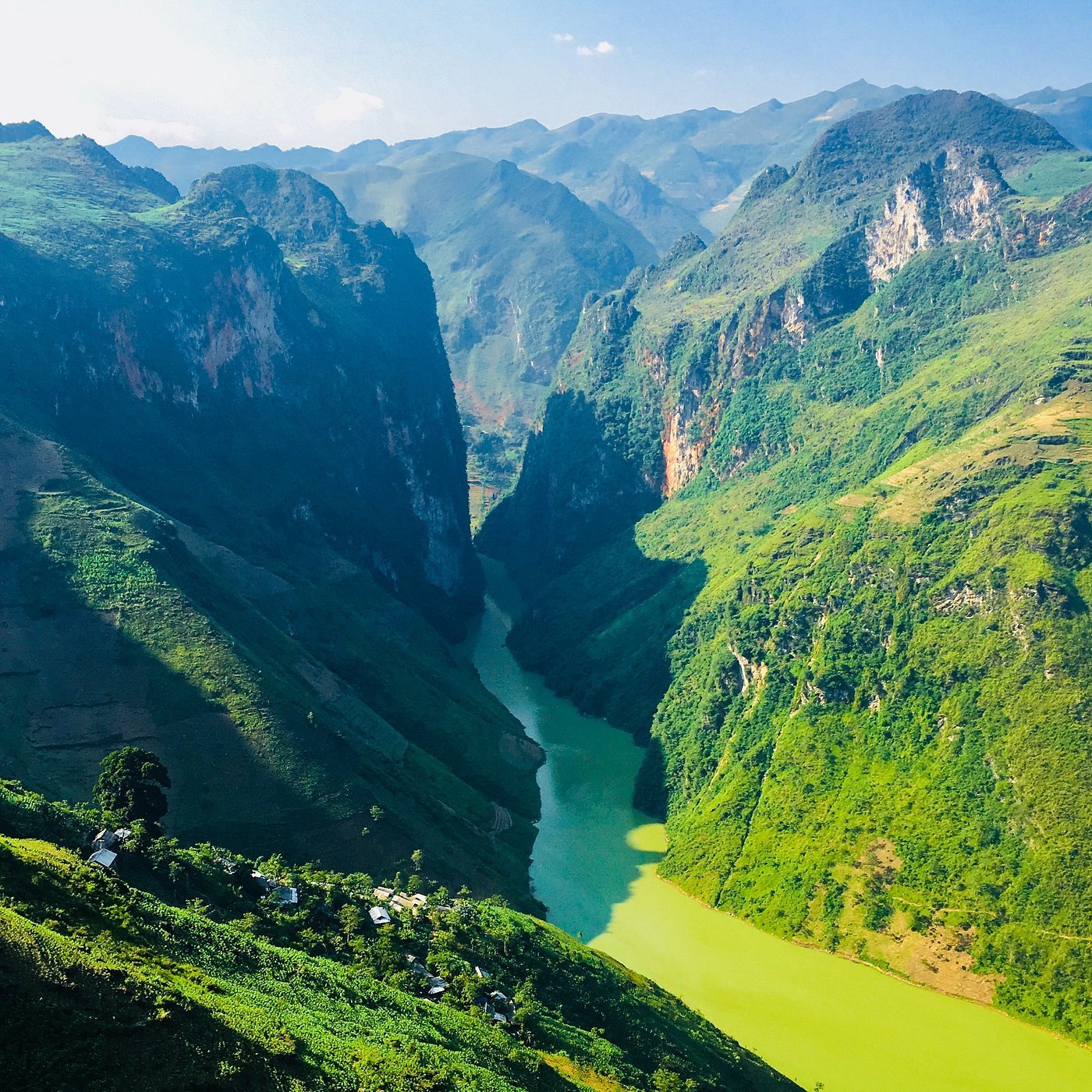Beyond the Beaten Path: Ha Giang, Vietnam’s Hidden Gem in the North
Dong Van highland, Ha Giang, Vietnam
Nestled in the northernmost part of Vietnam, Ha Giang is a province that captivates visitors with its unspoiled landscapes, rich cultural heritage, and rugged beauty. Far removed from the bustling cities and well-trodden tourist paths, Ha Giang offers a journey into the heart of Vietnam’s natural and cultural diversity. Here, jagged limestone peaks, deep valleys, and terraced rice fields paint a picture of serene beauty, while ethnic minority communities provide a glimpse into a way of life that has remained largely unchanged for centuries.
Nho Que River
The Geographical Splendor
Ha Giang is renowned for its dramatic karst topography, part of the larger Dong Van Karst Plateau, a UNESCO Global Geopark. This region is characterized by its towering limestone mountains, steep cliffs, and narrow valleys, creating a landscape that is both breathtaking and daunting. The Ma Pi Leng Pass, often described as one of the most stunning roads in Vietnam, winds its way through this terrain, offering panoramic views of the Nho Que River far below, snaking through deep gorges.
Rice terraces cascade down the mountainsides, their vibrant greens and yellows contrasting with the grey rock formations. During the rice harvest season, these terraces transform into golden staircases, while the blooming season in spring turns the hillsides into a sea of pink and white as the peach and plum blossoms bloom.
H'mong people of Ha Giang
Cultural Richness
Ha Giang is home to a diverse population, including over 20 ethnic minority groups such as the Hmong, Tay, Dao, and Giay. Each group has its own distinct language, traditional dress, customs, and festivals. The region’s remoteness has helped preserve these cultural identities, making Ha Giang a living museum of ethnic diversity.
The Sunday markets in towns like Dong Van and Meo Vac are vibrant gatherings where locals trade goods, socialize, and showcase their traditional crafts and textiles. Visitors can witness Hmong women in their colorful, hand-embroidered outfits, and Dao men wearing their distinctive turbans. These markets are not only commercial hubs but also cultural events where music, dance, and food are shared.
Curved roads along the Ha Giang loop attracts bikers from around the world
The Ha Giang Loop
For adventurous travelers, the Ha Giang Loop is a must-experience journey. This approximately 350-kilometer loop, starting and ending in Ha Giang City, takes riders through some of Vietnam’s most spectacular scenery. Winding mountain roads, remote villages, and towering cliffs define this route, making it a paradise for motorbike enthusiasts. Despite the challenging terrain, the loop rewards travelers with unparalleled views and the opportunity to connect with local communities.
Stops along the loop include the town of Dong Van, known for its historic Old Quarter with buildings dating back to the French colonial era, and the Lung Cu Flag Tower, Vietnam’s northernmost point. The Tham Ma Pass and the Ma Pi Leng Pass, with their hairpin turns and sheer drops, are both thrilling and humbling, reminding visitors of the raw power and beauty of nature.
Thắng Cố - A traditional Hmong soup made from horse meat, organs, and a variety of spices.
Savoring Ha Giang’s Unique Cuisine
A visit to Ha Giang is not complete without indulging in its unique local cuisine. The food here reflects the province’s diverse cultural heritage and the availability of local ingredients.
One of the most notable dishes is “Thắng Cố,” a traditional Hmong soup made from horse meat, organs, and a variety of spices. It’s often served during festivals and market days, providing a hearty and warming meal, especially appreciated in the cold mountain climate. For those seeking something less adventurous, there are other delicious options.
“Bánh Cuốn Đồng Văn” is a popular breakfast dish in the region. Unlike the southern version, these rice rolls are filled with minced pork and wood ear mushrooms, then topped with fried shallots and served with a flavorful dipping sauce made from bone broth, creating a savory and comforting dish to start the day.
Another must-try is “Cháo Ấu Tẩu,” a porridge made from the roots of the “ấu tẩu” plant, which are known for their medicinal properties. This dish requires careful preparation to neutralize the toxins in the roots, making it both a culinary specialty and a testament to local knowledge and tradition.
Local markets are also a treasure trove of fresh produce and snacks. Visitors can sample grilled corn, sticky rice in bamboo tubes, and a variety of forest vegetables and herbs that are unique to the region. The experience is further enriched by tasting homemade corn wine, a potent beverage often shared among friends and family during meals and celebrations.
Ha Giang remains one of the poorer provinces in Vietnam, and sustainable tourism development is a key concern for preserving its cultural and environmental heritage
Responsible Tourism
While Ha Giang’s growing popularity is bringing economic benefits to the region, it also poses challenges. The area’s delicate ecosystems and traditional ways of life are vulnerable to the impacts of tourism. Responsible tourism practices, such as respecting local customs, minimizing environmental footprints, and supporting local businesses, are essential to preserving Ha Giang’s unique heritage.
Conclusion
Ha Giang is more than just a destination; it is an experience of Vietnam’s untouched beauty and rich cultural tapestry. From its awe-inspiring landscapes to its vibrant ethnic communities and unique cuisine, Ha Giang invites travelers to step off the beaten path and discover a side of Vietnam that remains beautifully authentic. For those seeking adventure, tranquility, and cultural immersion, Ha Giang is a journey into the heart of a land where time seems to stand still.






